Mountains in Seoul. Where to Climb, Korean Mountain Culture and More
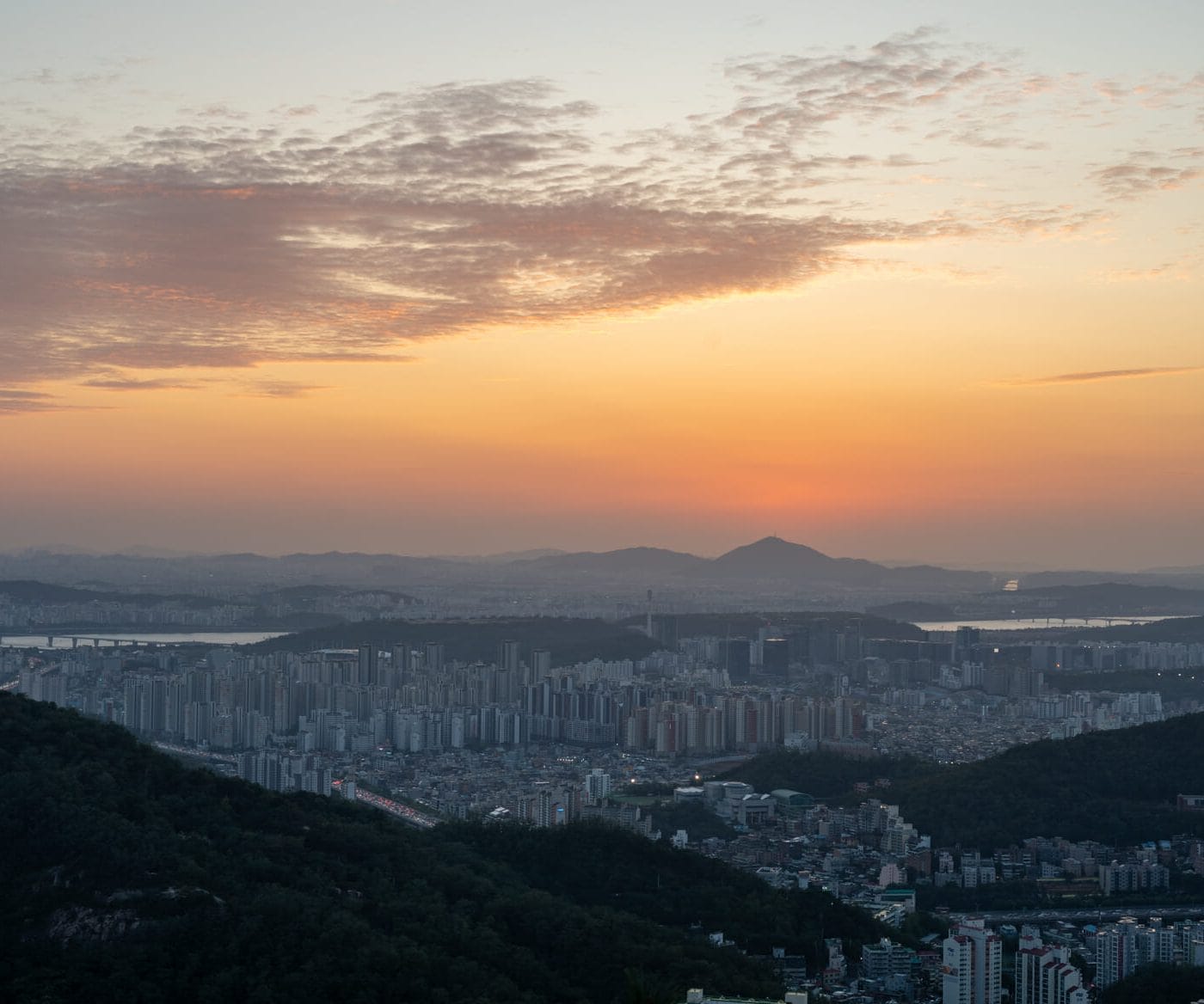
Seoul, and Korea in general, is known for being hyper-modern and very urban. While this is definitely true, there is also another side to Seoul. That is the natural side.
Although Seoul isn’t known for nature, it does feature quite a few natural attractions. The Han River is the most obvious of these, and it stands at the heart of Seoul. There are also many fantastic parks in the city, including some that are world famous.
However, another natural attraction that Seoul has is its plenty of mountains. There are tons of them located all over the city. In fact, according to Wikipedia there are 43 mountains in Seoul alone. 43! These range from being barely mountains (some are only 100 metres tall) to being decently sized at around 800 metres tall.
The vast majority of these mountains are well maintained and many of them have tracks all over them. On top of providing a great place to escape the urban environment of the city, they also make for great exercise areas. Even further, many of them have stunning views!
Although the mountains are well-known by many locals, they are often overlooked by travellers and people who are new to the city. This is sad because the mountains in Korea truly are stunning – especially in fall.
While this post is far from exhaustive, I want to discuss what to expect from the mountains in Seoul as well as some of the most popular mountains to climb. There are a lot of mountains in the city (43 to be exact), and I haven’t climbed them all myself. This post will focus on Seoul, but this post from Joelstraveltips has you covered if you are interested in mountains to hike in Korea.
However, this post will give you a good idea of what to expect from mountains in Seoul. From the quality of the tracks all the way to the views that you can expect at the top. Have you already climbed some mountains in Seoul? What was your favourite? I’d love to hear from you in the comments!
Korea Travel Essentials
Sim Cards
4G unlimited data SIM card | Portable 4G WiFi
Seoul Bus Passes
Discover Seoul BTS pass – FREE admission for 34 Seoul attractions | Seoul City Tour Bus | Incheon/Gimpo Airport to Seoul shuttle
Best Accommodation in Seoul
Check out these hotels in Seoul! | Agoda | Hotels.com
Check out other great activities, tours, and packages for travelling in Korea!
This site contains affiliate links to products. I may receive a commission for purchases made through these links. Affiliate Disclaimer.
What to Expect on Mountains in Korea
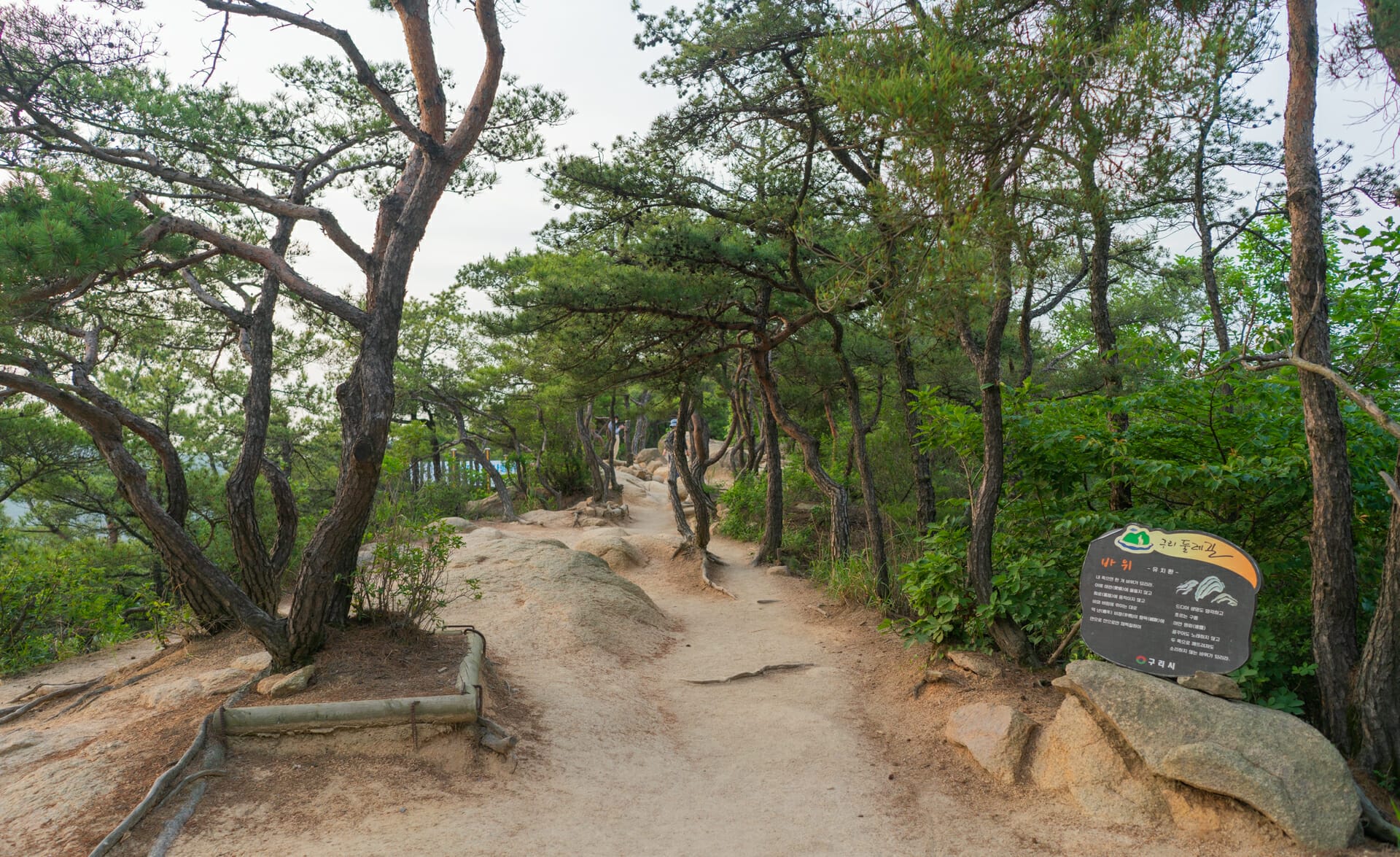
Mountains in Korea may be quite different from what you expect. Not only are they often quite small, but they are almost all well maintained and covered in different walking paths. The mountains in Seoul are located all over the city and you can quickly access many of them.
The mountains will usually have many paths, and this means that you can enter the mountains from many different areas. The paths are well maintained and you can expect to find stairs, handrails (for harder sections), and even boardwalks.
The mountains are also well signposted and this means that the chances of getting lost are very low. You will find maps at major intersections/points and you will find signposts all over the mountains.
While the mountains are well maintained, don’t always expect the tracks to be easy. At times you will encounter rocks that must be scrambled over, and in some areas you will virtually be rock climbing.
For this reason, it’s important to check the tracks that you want to take beforehand. This can be done (in many cases) online. Otherwise, the signs on the mountains themselves will also often show the difficulties of different paths. Fit adults should have no problems with any of the paths, but families with children may encounter some difficulties in certain sections.
Korea’s Mountain Culture
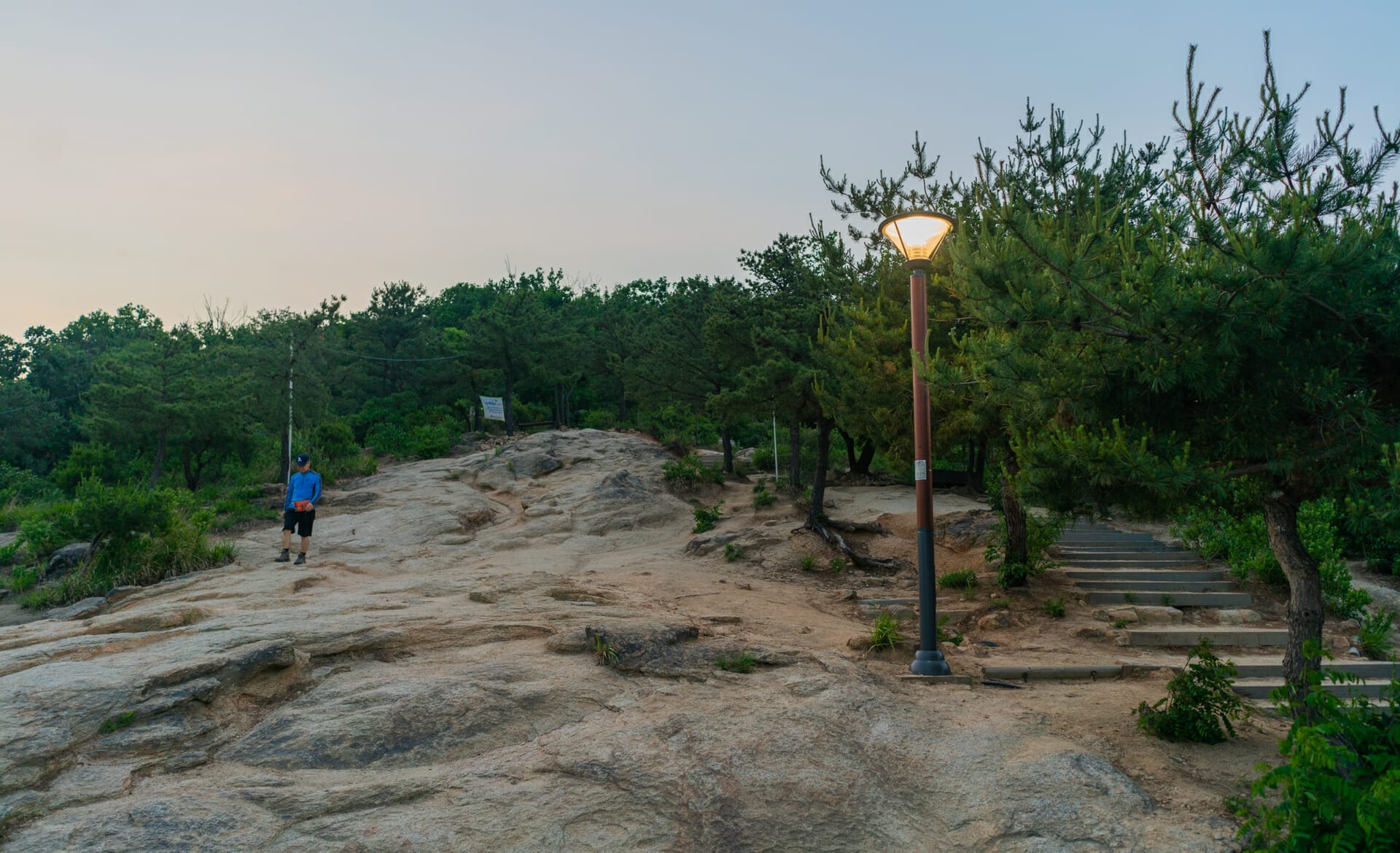
When you begin to get close to some of the larger mountains it is common to see hundreds of elderly people in full hiking gear. Equipped with boots, hiking poles, and hiking jackets, these people are ready to take on the mountain!
I have often felt intimidated by these people. Is this track going to be really difficult? Am I under-prepared? So far I have never found this to be the case. If you are walking to the mountain and notice how seriously dressed everyone is, don’t worry too much. The odds are you will be fine! Although, if you hike in winter some caution is required and you may need gear.
Another thing that you will notice is that mountaineering is an activity that is mainly enjoyed by the older generation. There are far fewer younger Koreans out enjoying the fresh mountain air. I think this is mainly due to the difference in activity preferences between the generations, where younger people prefer indoor activities.
Since many of these people are unemployed, or work shorter hours, you will find elderly people on the mountains all throughout the week. I can’t blame them! It’s a great way to find nature in an environment that is otherwise sprawling city in all directions.
Perhaps the most surprising part of mountains in Korea, however, are the exercise areas that are set up all over them. Often halfway up tracks you will encounter small areas that are set just off the path and are filled with exercise equipment.
This equipment is free to use and it’s a great way to encourage exercise. Many people can’t afford gym memberships, and many people don’t want to visit gyms regardless. These little exercise areas offer some basic equipment that allow people to stay in shape while out on their mountain walks.
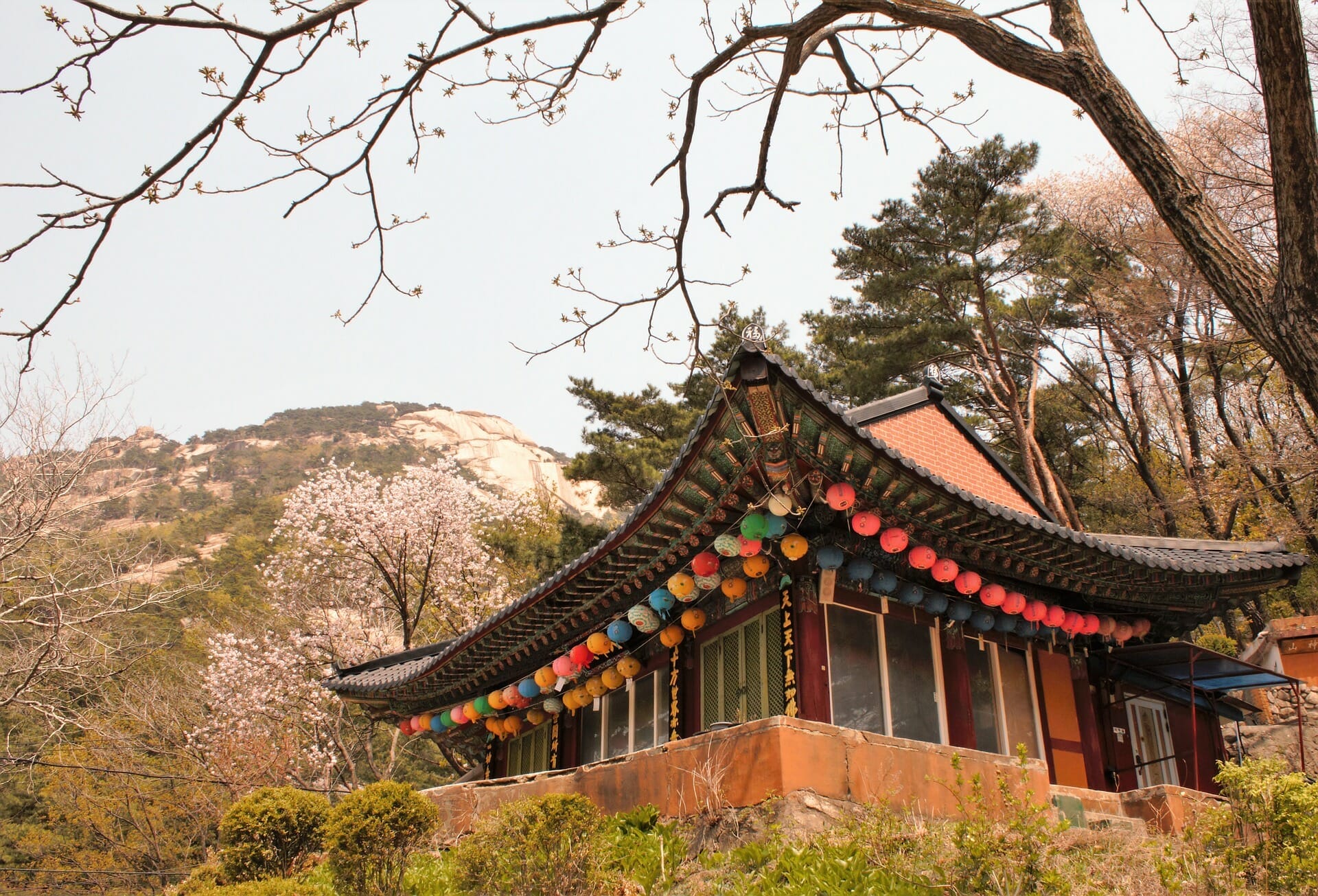
Finally, one more factor that I want to mention that makes Korean mountains rather unique is the history that they hold. Many of the mountains hold different historical structures, and many have a strong Buddhist influence. It’s not uncommon to find Buddhist temples, statues, and other influences on the mountains.
Overall, there is most definitely a unique mountain culture in Korea. I feel like Seoul (and Korea overall) has done a great job utilising the mountains. What was already a great way to enjoy nature in the city has been made even better
Mountains in Seoul

This list is by no means a complete list of all of the mountains in Seoul. A post including every mountain in the city would be pages upon pages long. I haven’t even climbed half of the mountains in the city yet!
With that being said, this list discusses not only some of the most popular mountains in the city but also some of my personal favourite mountains. All of these mountains provide stunning views of the city, but they all have different attractions otherwise.
Some of the mountains on this list are very built-up (such as Namsan and Naksan) while others are less so. However, all of these mountains are well maintained and they all have good quality tracks. The government does a great job look after the tracks, and they are all safe.
Bukhansan

Bukhansan is one of the most discussed mountains in Seoul. This mountain stands at just over 800 metres tall and it is aptly translated to ‘North Han Mountain’ in other words, it is a mountain located north of the Han River. It is also the tallest mountain in Seoul.
Bukhansan is the most popular mountain in the city for hiking. Although other mountains such as Namsan and Naksan are more visited, they don’t offer hiking tracks as they are very built up. In fact, both Namsan and Naksan have buses that go to the top!
Bukhansan, on the other hand, is a mountain that has more of a ‘wild’ side. Although the tracks are still well maintained, they aren’t paved and they are more akin to actual mountain tracks. You will find many of the more serious mountain walks in Seoul on Bukhansan.
The mountain has three peaks, Baegundae, Insubong, and Mangyeongdae. All of these peaks stand at around 800 metres tall, and this means that the mountain has a large variety of different paths to explore.
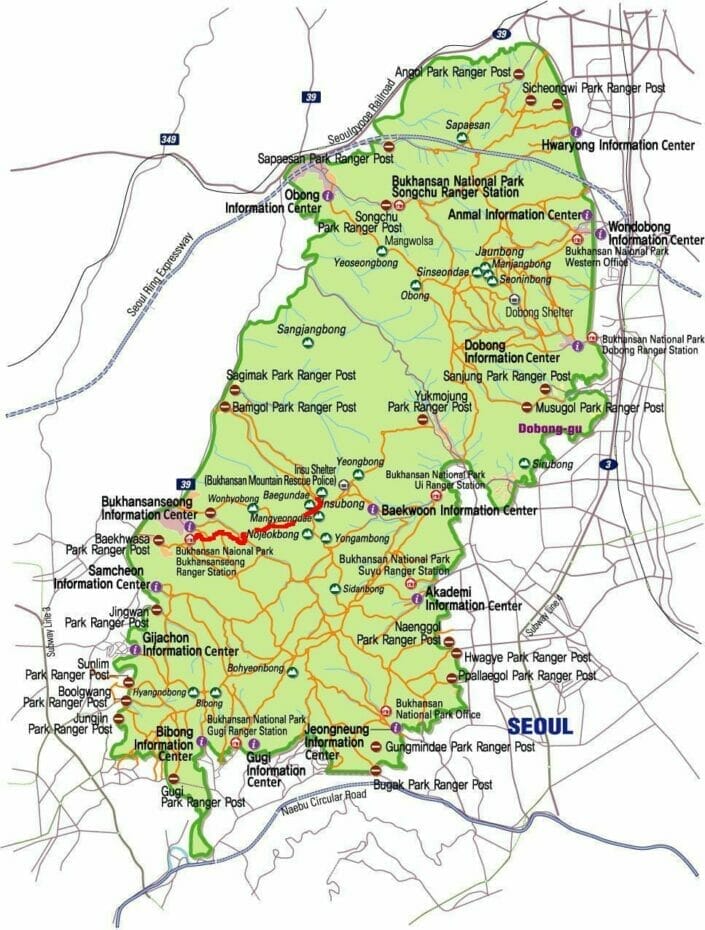
Map from Korea National Park Service.
Bukhansan has a large variety of walks and you can find everything from shorter 1-2 hour walks all the way to walks that take days (if you want to circumnavigate the whole park). These walks also range greatly in difficulty, with some being very easy and some being quite difficult.
It is worth noting that Bukhansan is a mountain that get dangerous in winter. The first time I climbed the mountain, I went in winter. Near the top of the mountain, we began to run into issues as the iced-over path became quite dangerous and slippery.
While in summer time no special gear is needed for most of the paths, winter is a different story. Make sure to bring hiking boots and to be prepared for the snow and ice that becomes plentiful the further you ascend.
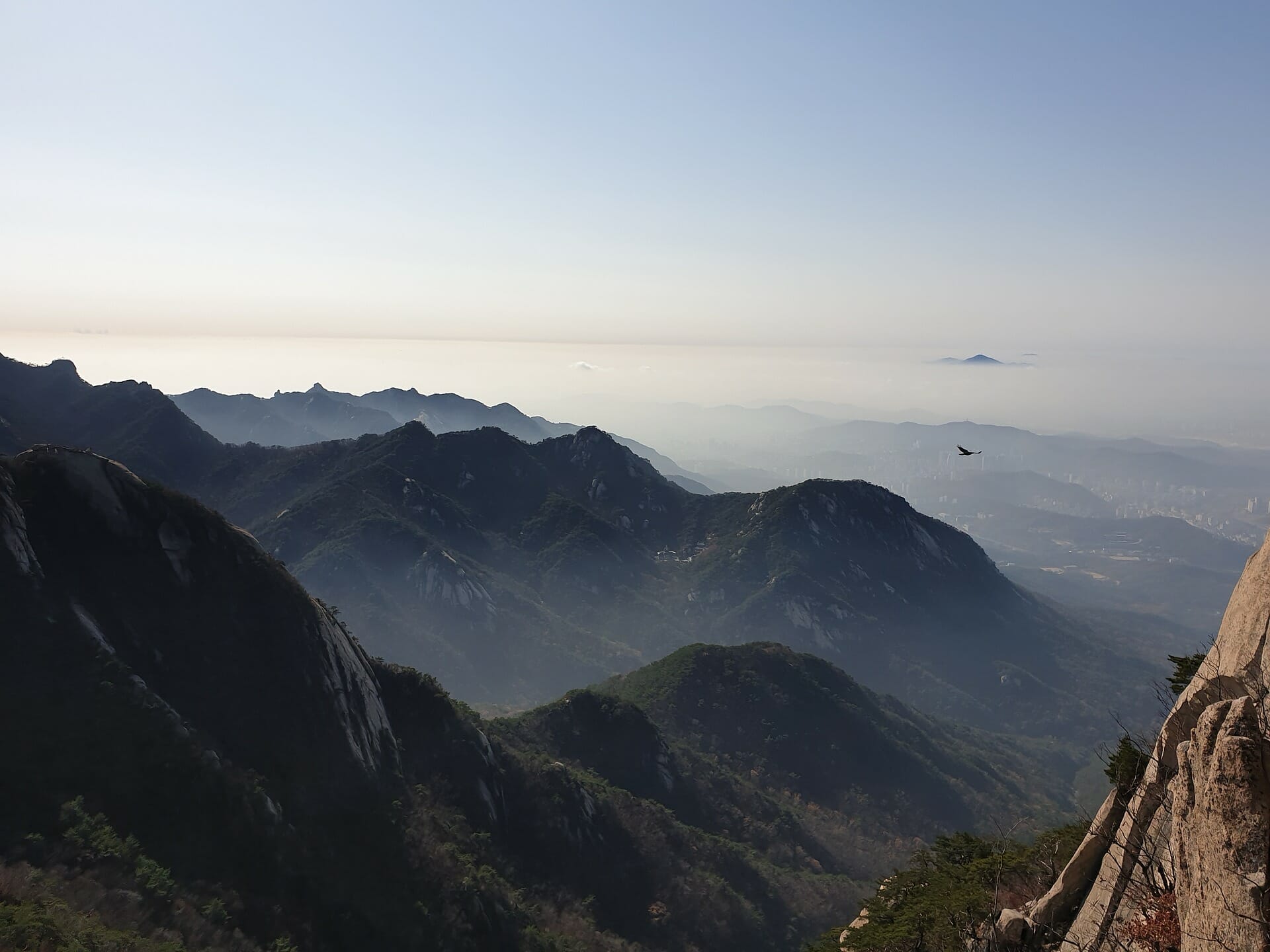
Unfortunately, finding information on the specific tracks on Bukhansan can be quite difficult. Some websites, such as the Korea National Park Service website do provide some information, but they are rather lacking. The Korean Tourism Organization also provides an overview of many of the different mountain paths.
Luckily, most of the major entrances to the mountain have information centers. These are usually open until 6 pm, and they are able to provide information on the best tracks for you situation are. They also have maps and other essential information.
Overall, Bukhansan is a great mountain for anyone looking for a more traditional hike. It has some of the more difficult (and longer) walks of all the mountains in Seoul, and it’s massive national park holds a lot of areas to explore. If you want to get in amongst nature in the city this is one of the best places to do so.
Experience Bukhansan with a private hiking tour! | Bukhansan Rock Climbing Tour!
Naksan
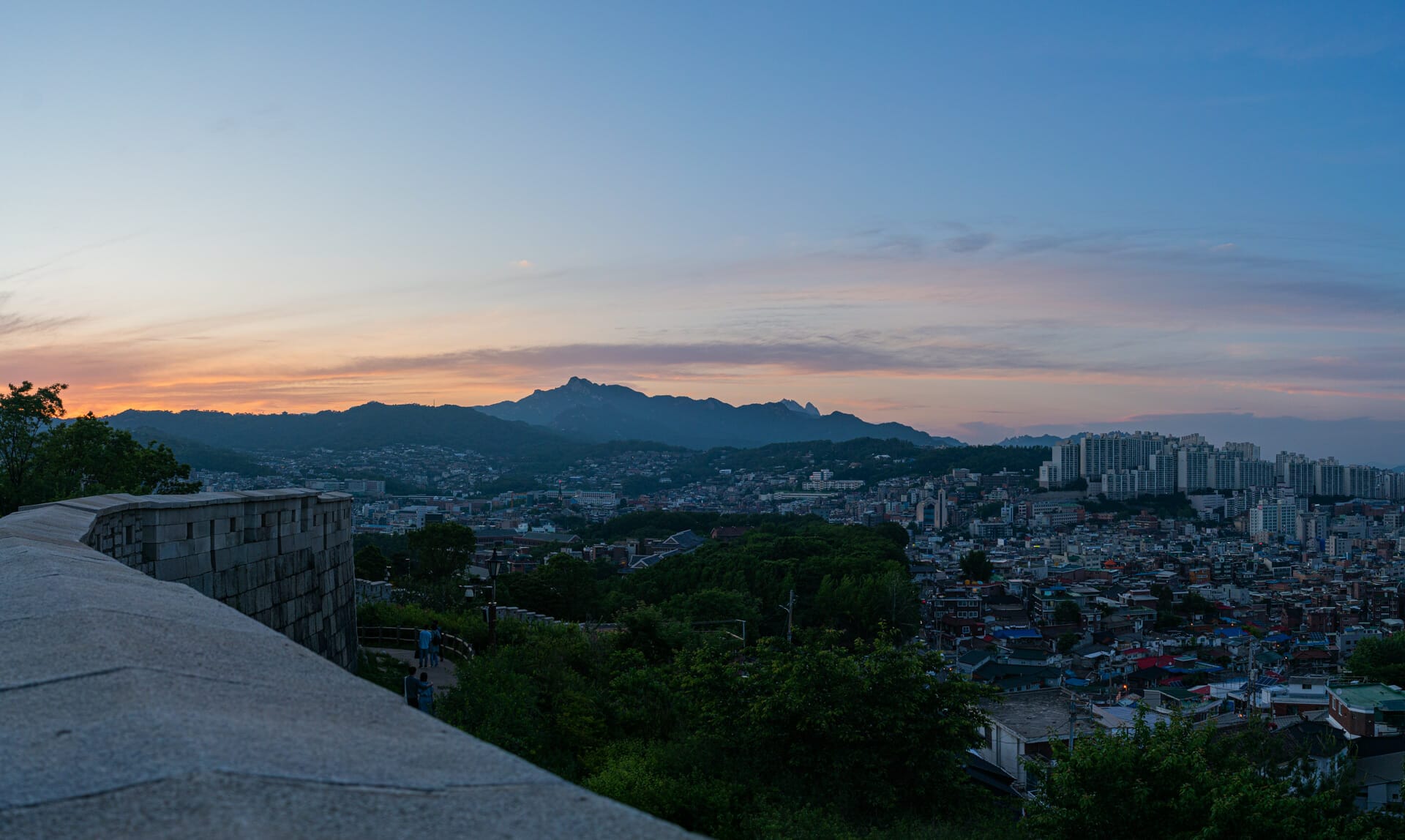
Unlike Bukhansan, Naksan is a very built-up mountain. It’s also far smaller. The whole mountain offers paved paths and there are even cafes and restaurants near the top. Surprisingly, a bus even goes right to the top of the mountain!
Naksan is accessible from a few areas. It is usually accessed from Hyehwa Station, however, Hanseong University and Dongdaemun Station also offer very quick access to the mountain. From Hyehwa and Hanseong University Stations it is around a 30 minute walk to the top. From Dongdaemun it is around the same, however, the path is steeper.
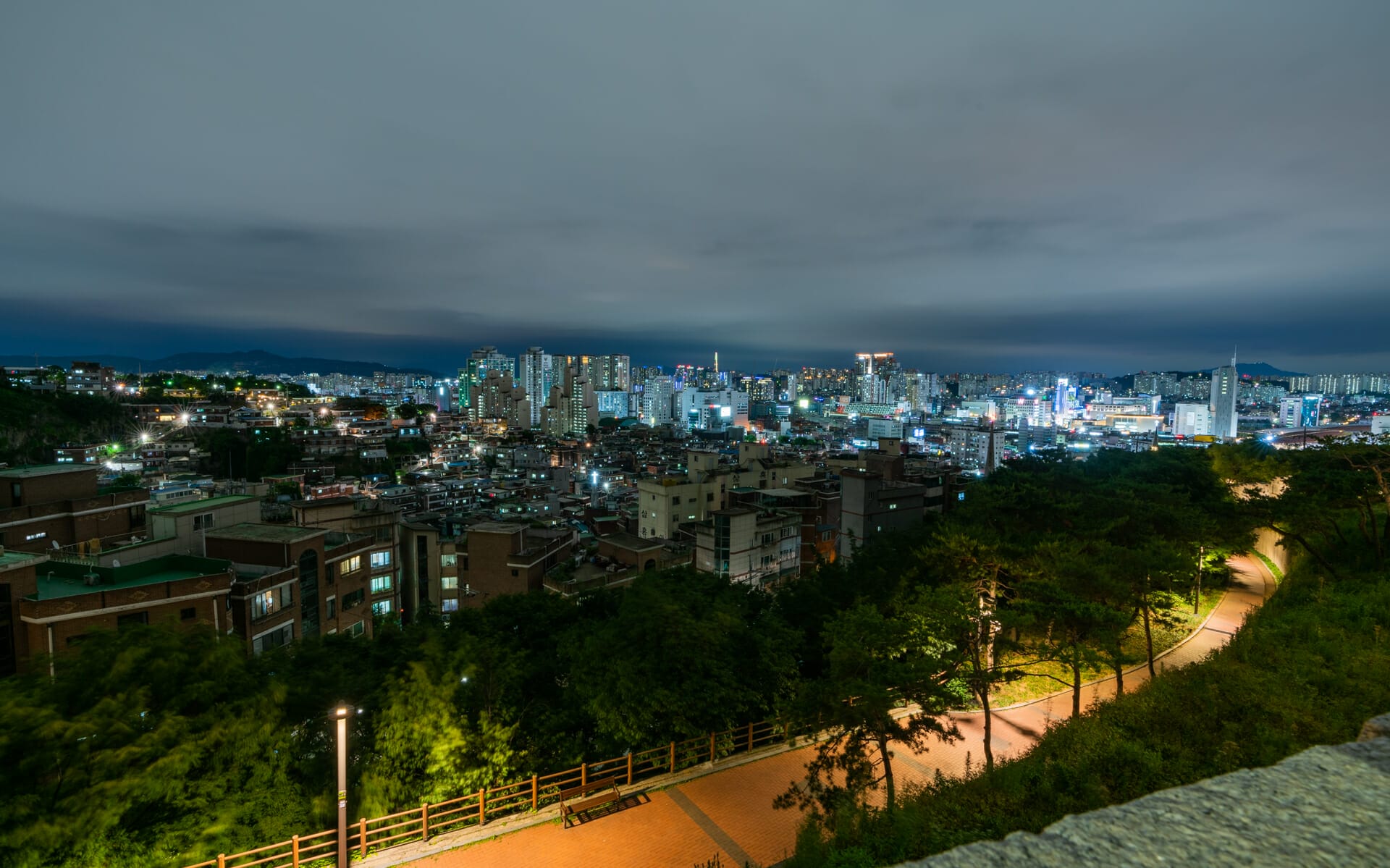
Naksan is one of the best mountains in the city for visitors and locals alike. This is due to the fact that it provides a great way to enjoy the weather while being exceptionally easy to access. While the walk is all paved and relatively short, there are some great paths for exercise.
The mountain also offers stunning cherry blossoms in spring. It’s one of the best places to view cherry blossoms without having to leave the city, and for that reason I highly recommend Naksan to anyone visiting in spring.
To top it all off, Naksan also has some great views near the top. While the view isn’t the best in the city, it is a stunning one all the same. Considering how easy it is to access, it is also one of the easiest viewpoints to recommend.
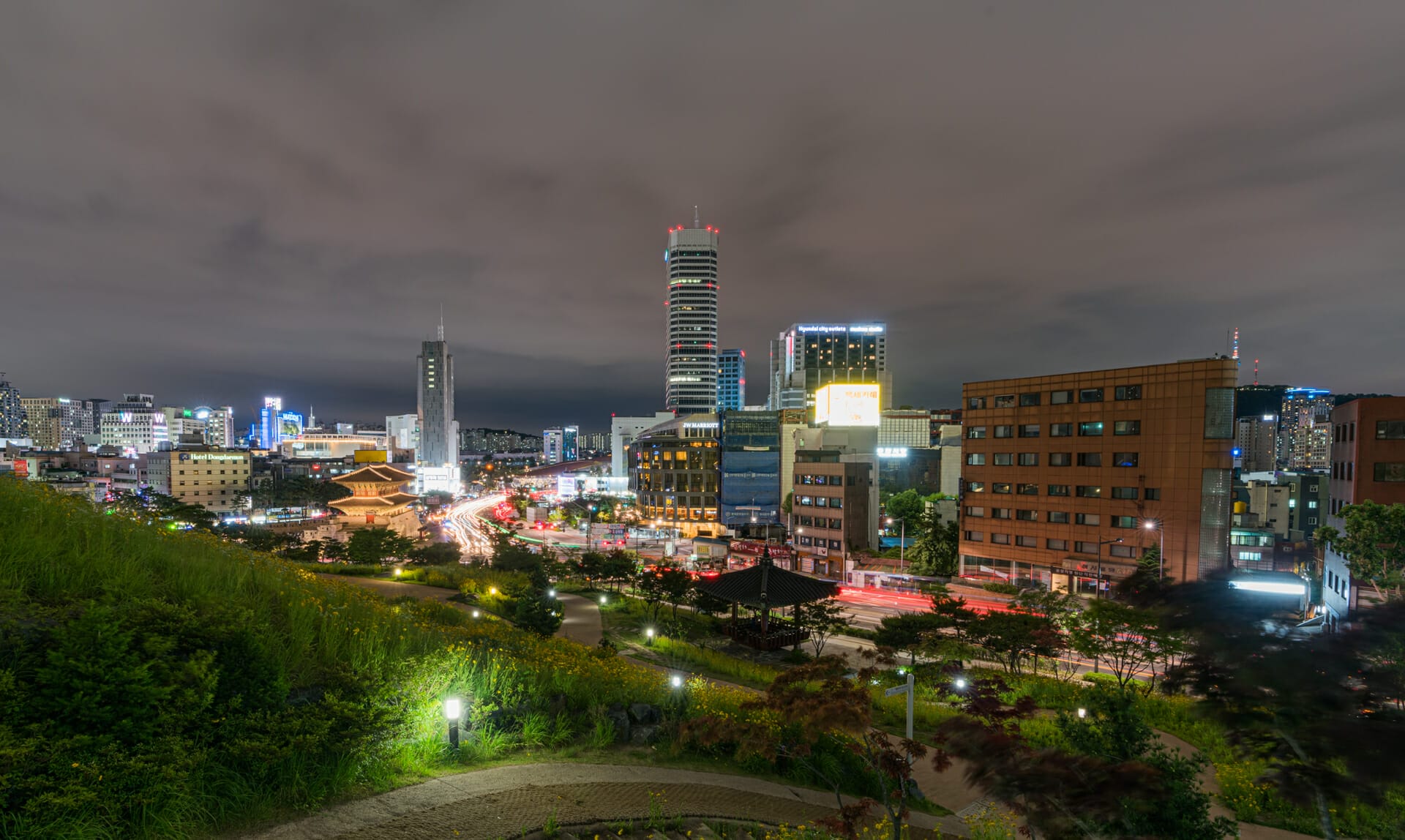
If you visit near sunset you will be able to take some stunning pictures. This is my favourite time of the day to visit because it provides great views not only of the sunset, but also of Namsan Tower and Dongdaemun. Expect to find a lot of people though, as Naksan is popular for sunset dates!
Overall, Naksan is a great mountain in Seoul for anyone that wants a quick excursion from the city. Although the mountain is still very built-up, it offers some nice walks amongst trees and it also provides some stunning views of the northern part of the city.
Namsan
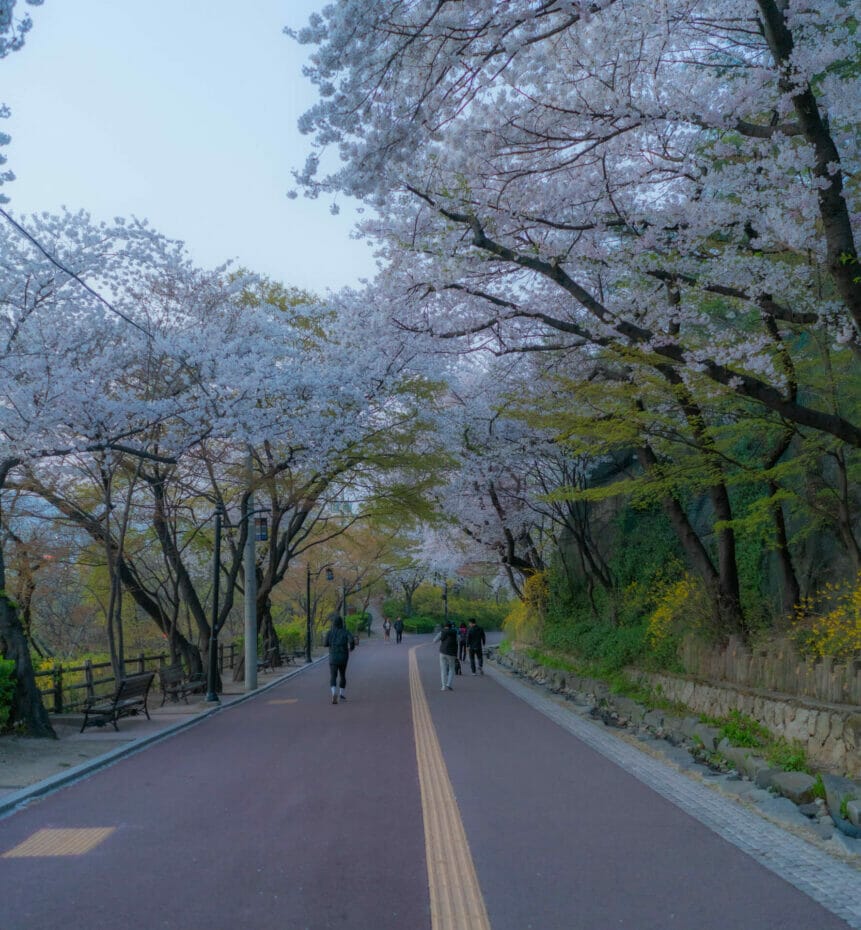
Namsan is best known for… Well, Namsan Tower of course! I’m a massive fan of Namsan Tower. In fact, I think it is one of the very well known tourist attractions that is 100% worth visiting. However, when you visit Namsan, make sure to not visit just the tower. The mountain is also fantastic!
Similar to Naksan, Namsan is a great mountain to view the cherry blossoms on in spring. In fall, it’s also a great place to visit as the fall foliage comes out. It is surprising how many people never realise how beautiful Namsan is – since there is a bus to the top, many people never get to experience the park.
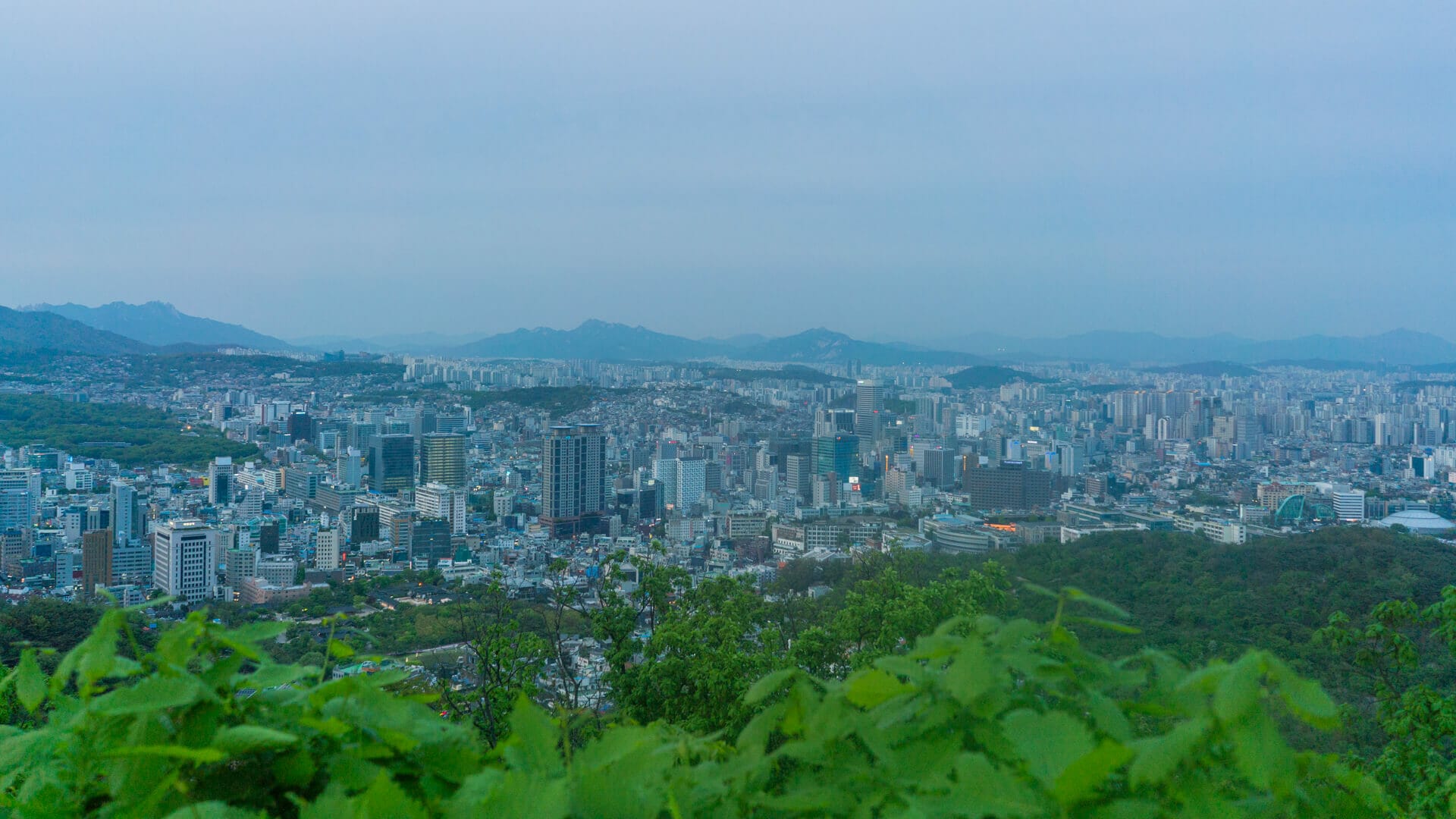
Namsan is perhaps the most built-up mountain in all of Seoul. There are either roads or very well maintained paths all over the mountain, and most of them only have shallow inclines. For this reason, Namsan is a great mountain for families to visit.
The park is very easy to access and can be quickly accessed by bus from either Itaewon or Myeongdong. There are also many other activities on the mountain such as the Namsan Cable Car, Namsan Tower Observatory, and the Namsan Complex (which has constantly changing exhibitions).
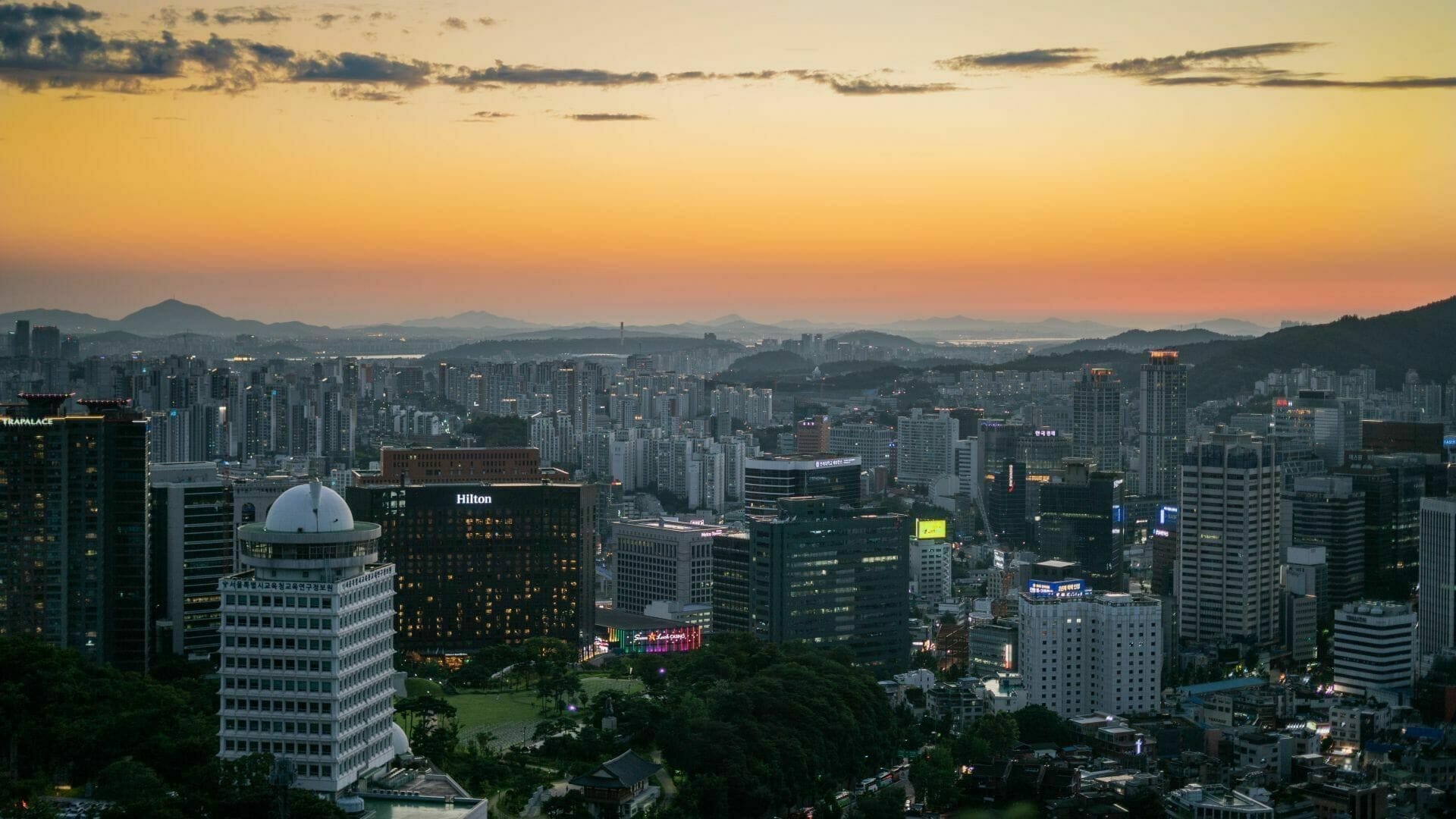
There are a range of paths that traverse the mountain, and you can find everything from short 15 minute walks to 2-3 hour walks. All of these walks are quite easy due to the quality of the paths. However, some of the lesser-used tracks can be a bit steep and you may find yourself needing a rest stop or two.
Despite being the most built-up mountain in Seoul, Namsan still offers a great escape from the sprawling urban environment below. The paths are well maintained and the nature is beautiful – especially in spring and fall. If you are looking for somewhere to experience nature without difficult walks then this is the place!
Get Discount Namsan Tower Tickets!
Achasan
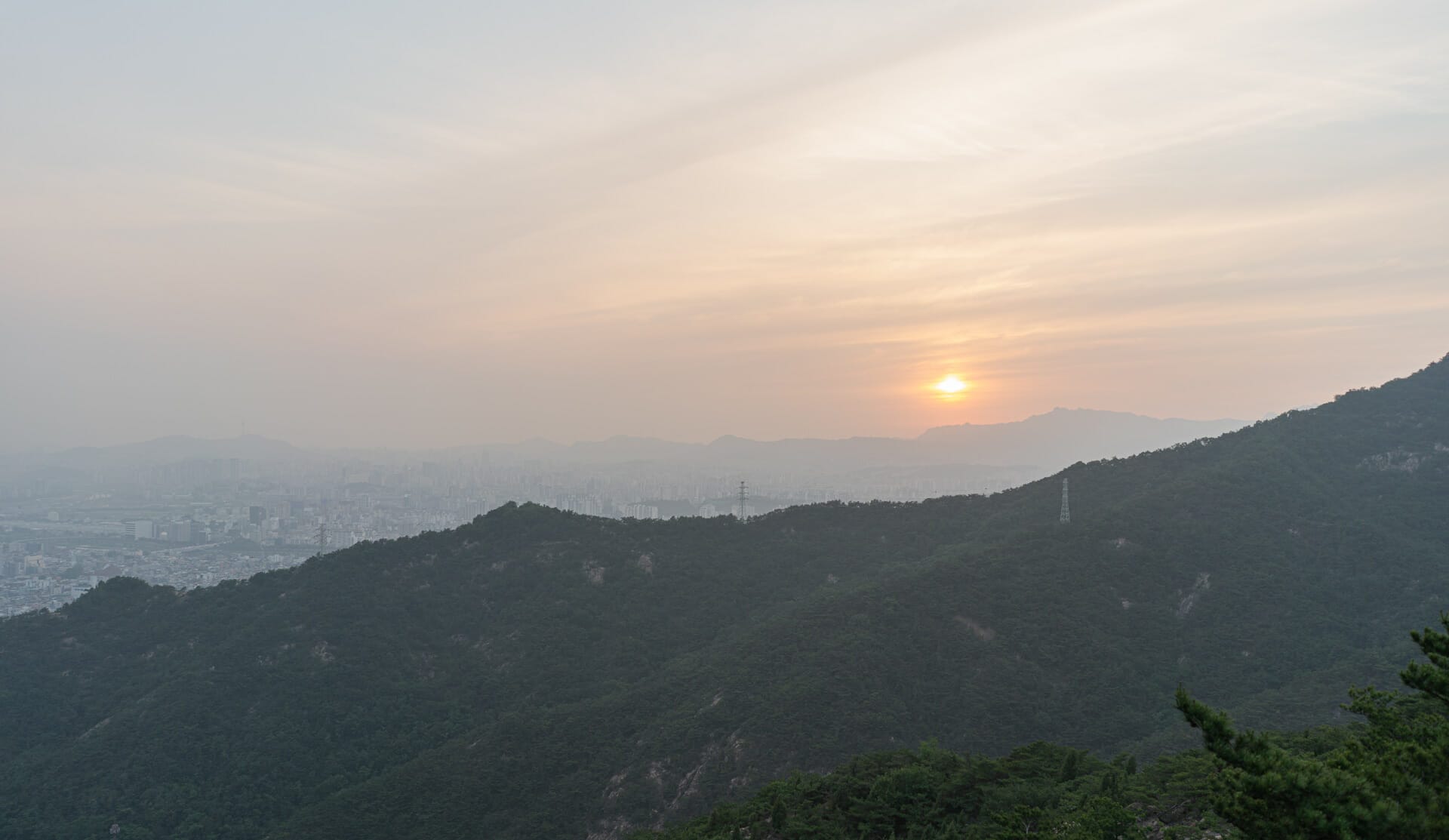
Achasan is a mountain that I didn’t climb until recently. I regret not climbing it sooner though, as the mountain has quickly become one of my favourites within the city limits. It offers some stunning views as well as walks that are medium in both difficulty and length.
The mountain is a bit harder to reach, and I found a guide online covering how to reach the mountain. Once you reach the bottom of the mountain, it takes around 30 minutes to reach the top. This is where you will find most of the views in the images here.
You can also continue past the peak, as the track continues for an hour or two down the other side of the mountain. If you are looking for a longer hike, then I recommend continuing past the peak and walking down the other side towards Yangwon Station.
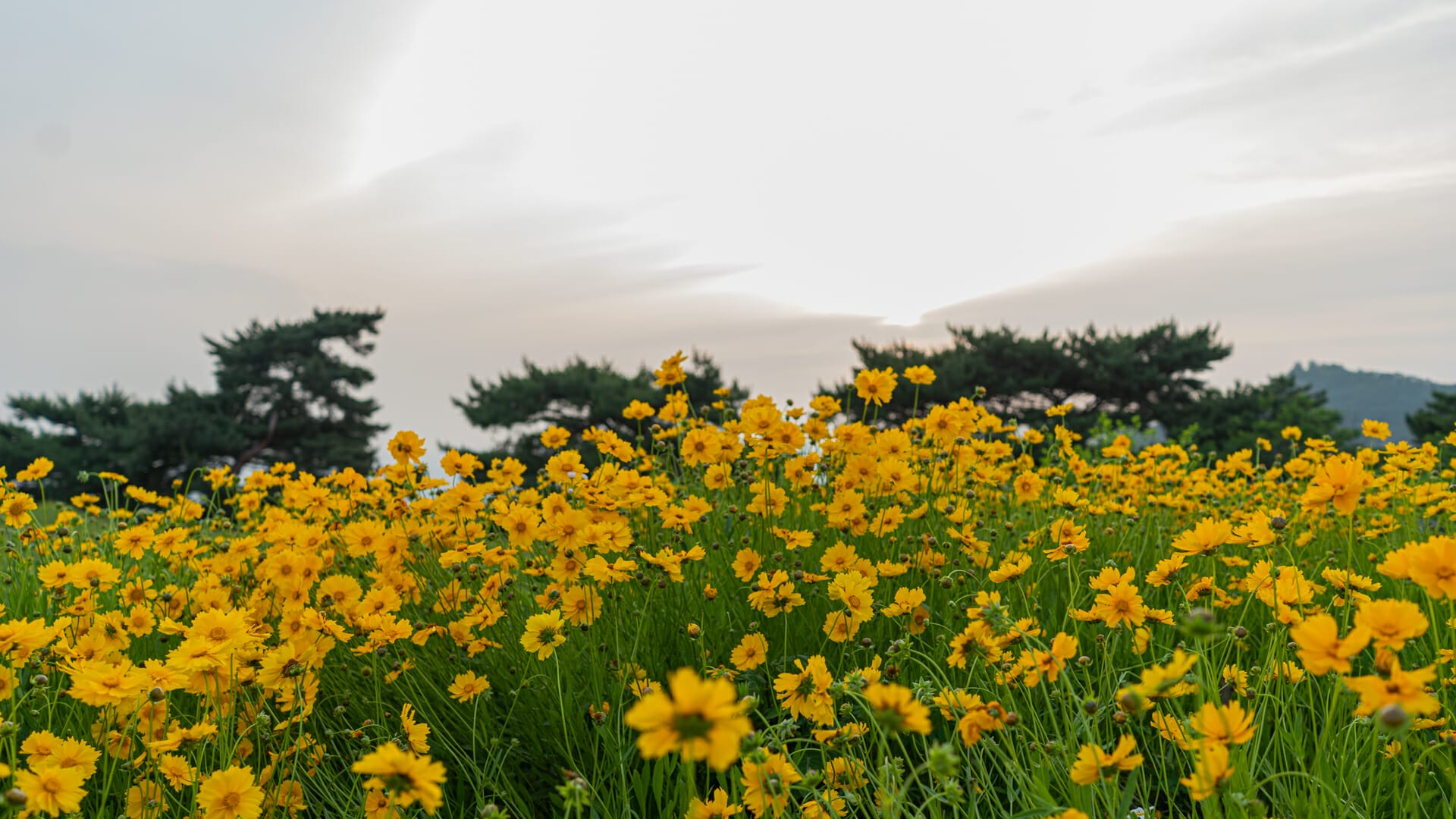
At the top of the mountain (about 30 minutes of walking) you will find some nice flower fields. If you visit in summer these flowers will be in bloom and they make for some beautiful pictures! No matter what season you visit in though, you can always find nice views towards Lotte Tower.
There are two main viewing platforms on the main path to the top. The first one is located right outside a pavilion, and this is where many people will stop. However, if you continue past the pavilion for just a few minutes you will come across some viewing platforms with binoculars.
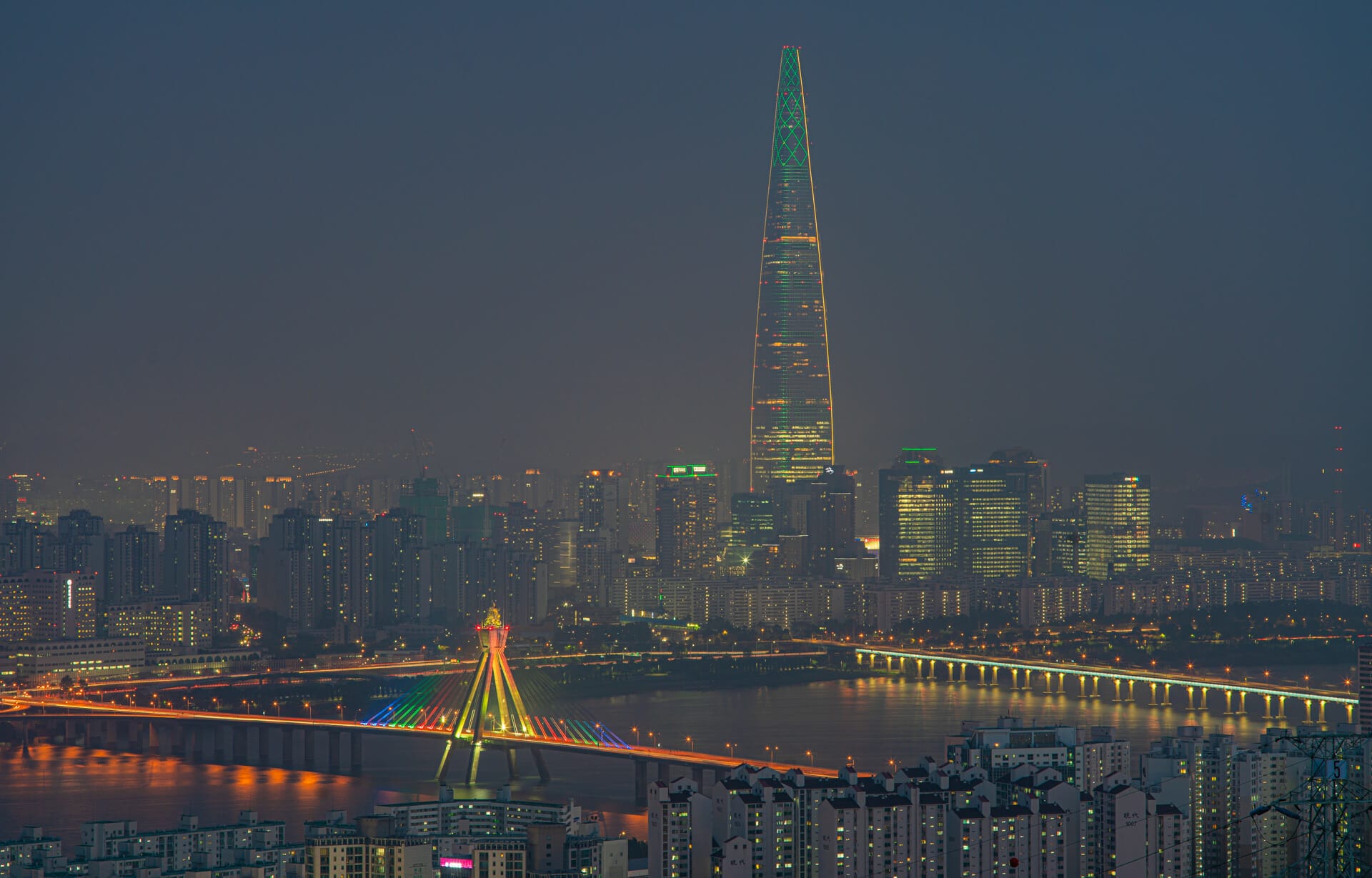
The one thing to watch out for is fine dust. While you will usually be able to get stunning views, the dust can make them far less pleasant. The image above was taken on a day with quite high dust levels and besides being unhealthy it also gives pictures a grey or brown glow.
Achasan is less built-up than mountains such as Namsan and Naksan. However, this is the reason that I like it so much. The mountain and tracks are still very well maintained, but it has less of a ‘city’ feel to it than the aforementioned mountains. It is also far less crowded as it is a bit harder to reach.
Eungbongsan
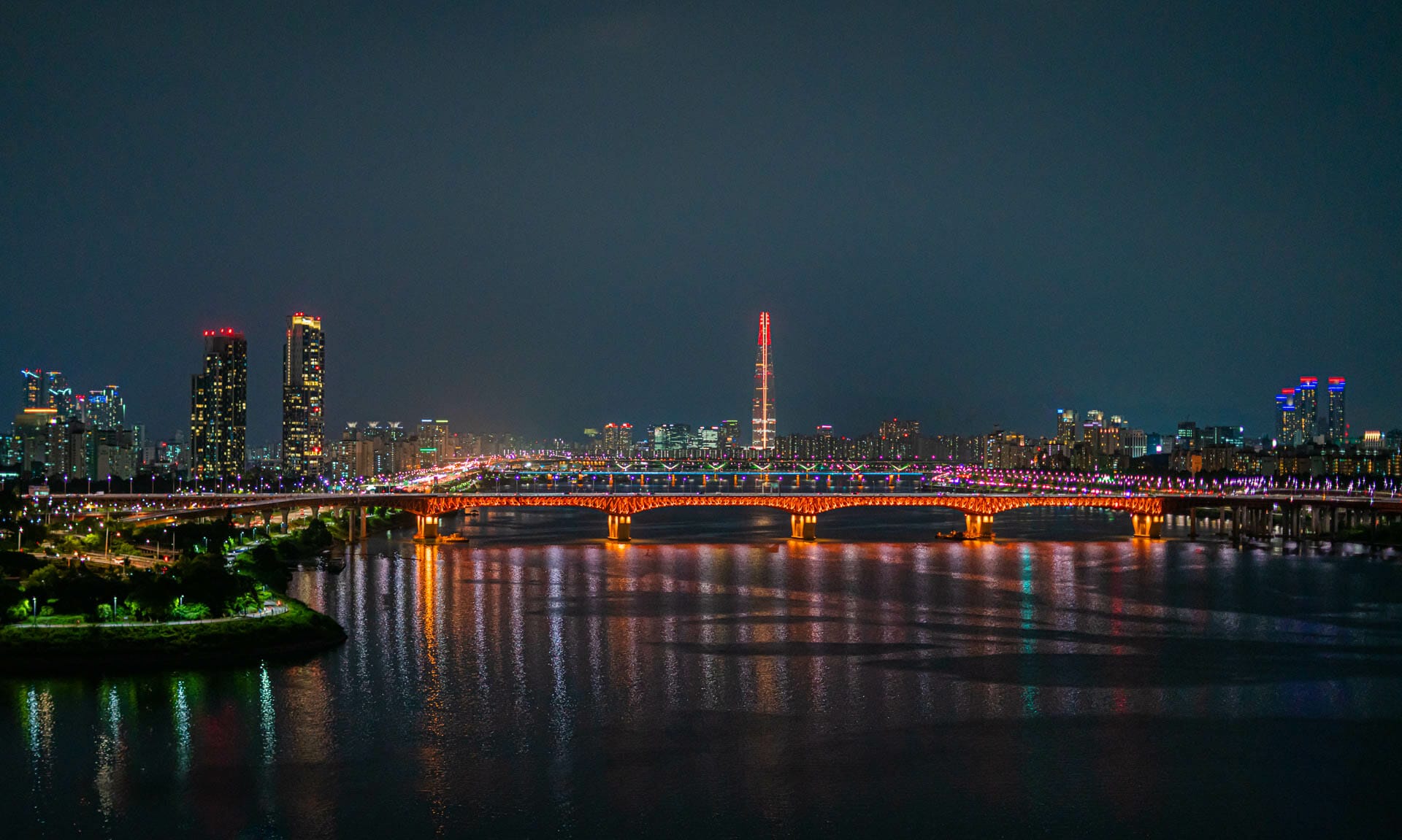
Eungbongsan is the smallest mountain on this list and it’s really not a mountain at all. I would consider it more of a large hill. However, somehow it managed to get the name of mountain, so it manages to make this list.
When I first visited Eungbongsan I was convinced that it was one of the best views in Seoul. To this day, I still love the view and think that it is one of the most accessible great views in Seoul. Not only that, but it’s also a relatively unique view of the city. While it’s not exactly an uncommon location to visit, it is a mountain that is overlooked.
The mountain has some of the best Han River views because it is located right next to the Han River, as well as another river that meets the Han just below the mountain. Not only this, but Lotte Tower is located just down the river from the mountain, allowing for some fantastic picture opportunities.
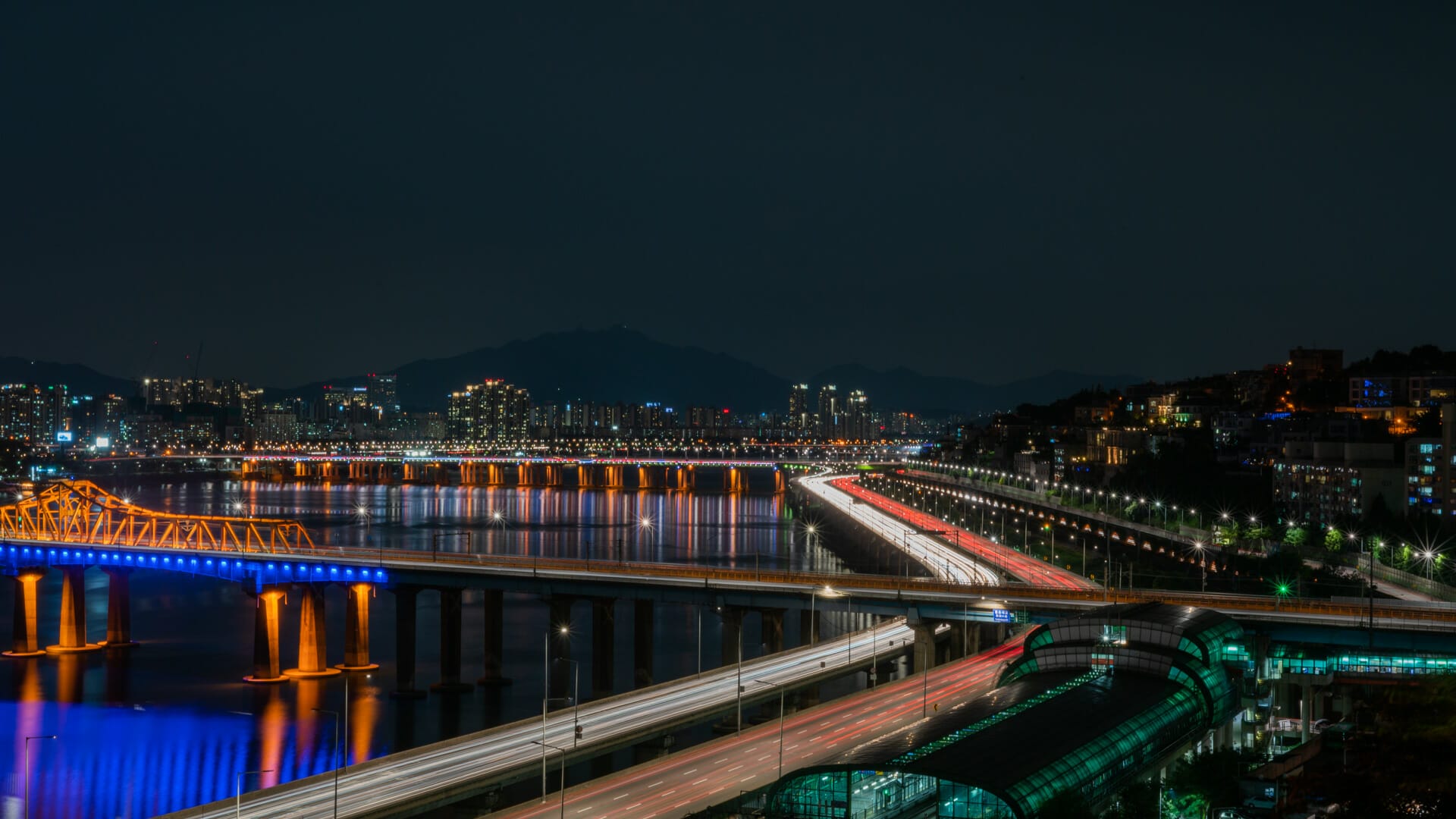
The mountain itself has a walking path from Eungbong Station to the top. This is the path intended for walking, and it is especially nice in spring when the flowers bloom. An alternative way to the top is to follow the road from Eungbong Station.
I actually prefer to follow the road to the top and to take the walking path down. This is due to the fact that there are some nice sights on the way up, and you also get to pass some nice houses. The road is generally not busy at all, so cars are of little worry.
Getting to the top from the station will take 15-20 minutes. As I mentioned earlier, the mountain really isn’t so much of a mountain as it is a large hill. The track is also easy and well-maintained, so you should have no issues reaching the peak of the mountain.

Due to the short walking distance and low difficulty of the walk, as well as the stunning views from the top, Eungbongsan is a popular date location. You will pass lots of couples on your way to the top, and usually there will be even more at the top!
Once at the peak, you can expect stunning views of the Han River in both directions. Although there are a few trees and bushes obscuring the views, you can still take in some breathtaking sights. You can even see Namsan Tower from Eungbonsan!
Overall, Eungbongsan is a great mountain that has accessible views. It is the smallest mountain on this list, however, it manages to have some of the best views on this list. Whether you want a short walk, a great date location, or some stunning sunset pictures, Eungbongsan is the place to go!
Inwangsan

Inwangsan is another mountain that is located in a very accessible part of Seoul but that is often overlooked. Despite being a short 30 minute walk from the nearest subway station, very few people ever actually climb Inwangsan.
There are a few different ways to reach the mountain, and this guide explains how the get there in detail. When I visit, I usually go from Muakje Station. From Muakje, getting to the peak of Inwangsan is a relatively short 30-minute walk.
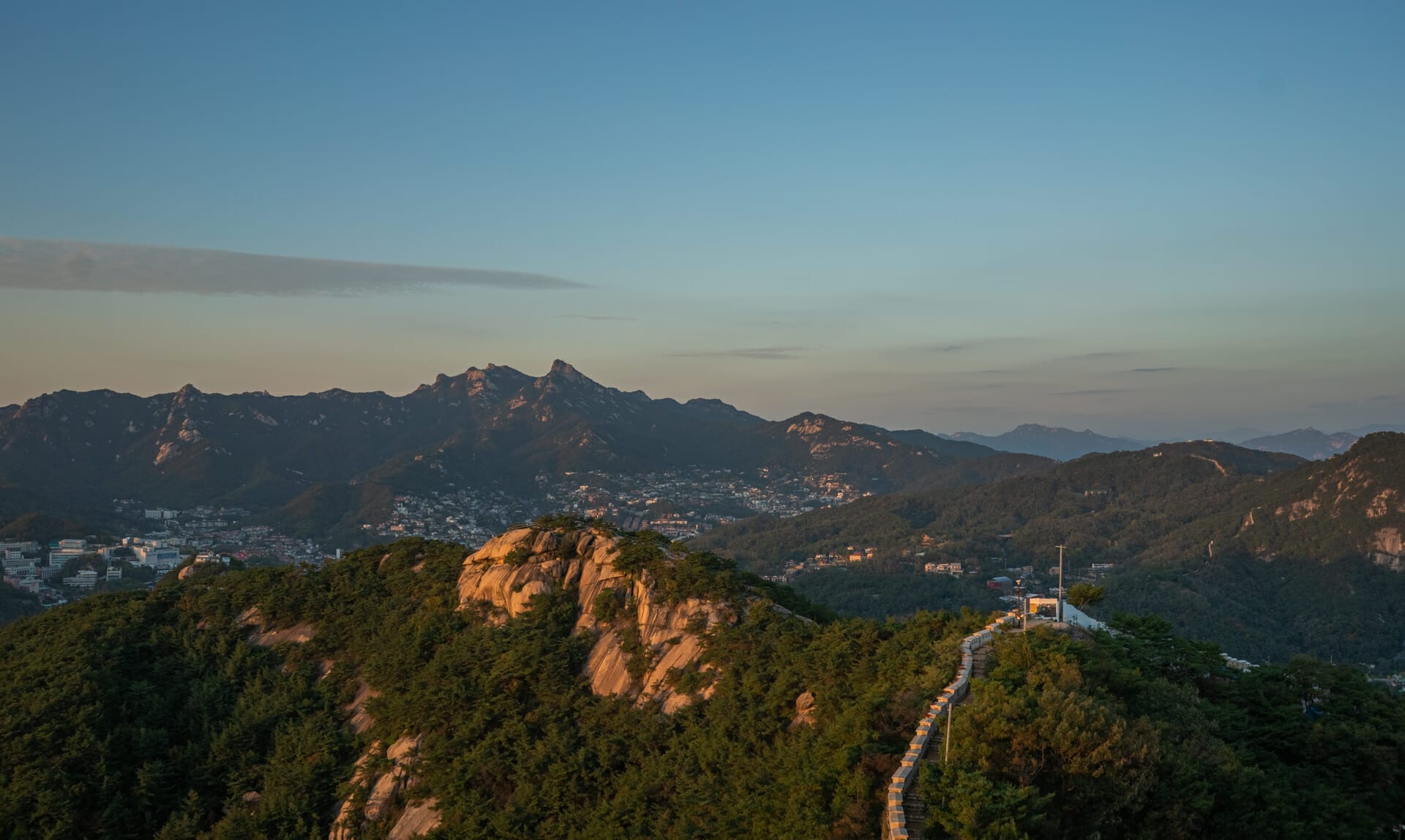
While the walk to the peak of Inwangsan is quite short, it is very steep at points. Since the walk is short, it is possible to stop and get your breath while still reaching the top in good time. However, it is something to look at for as this is one of the more difficult walks on this list.
While most adults will have no problem reaching the top, it may be difficult if you are travelling to Seoul with family. Younger children may find the steep parts of the walk difficult, and there is some rock scrambling involved near the top.
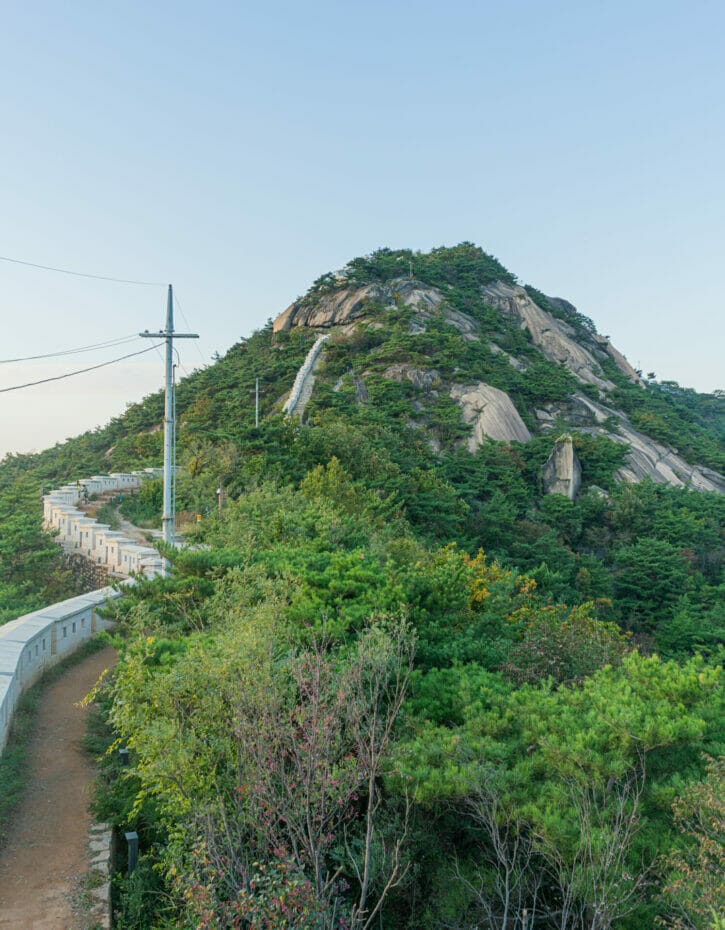
However, the short but steep walk is well worth it, because at the top of the mountain you will be greeted with some of Seoul’s best views. These are some of the most complete views of the city, as you can see the whole area from Gyeongbokgung Palace to Namsan Tower and beyond.
If you are in the area (near Gyeongbokgung Palace, Insadong and Bukchon Hanok Village) then Inwangsan is easy to add to your itinerary. It’s a short ride on public transport to Muakje Station, and then another short walk to the top of the mountain.
Overall, Inwangsan is another mountain on this list that features stunning views of the city. These views look right over the city, and they are some of the most complete city views that you will find in Seoul. However, the walk to the peak of the mountain is a bit more difficult than other city mountains such as Namsan, Naksan, and Achasan.
Ansan
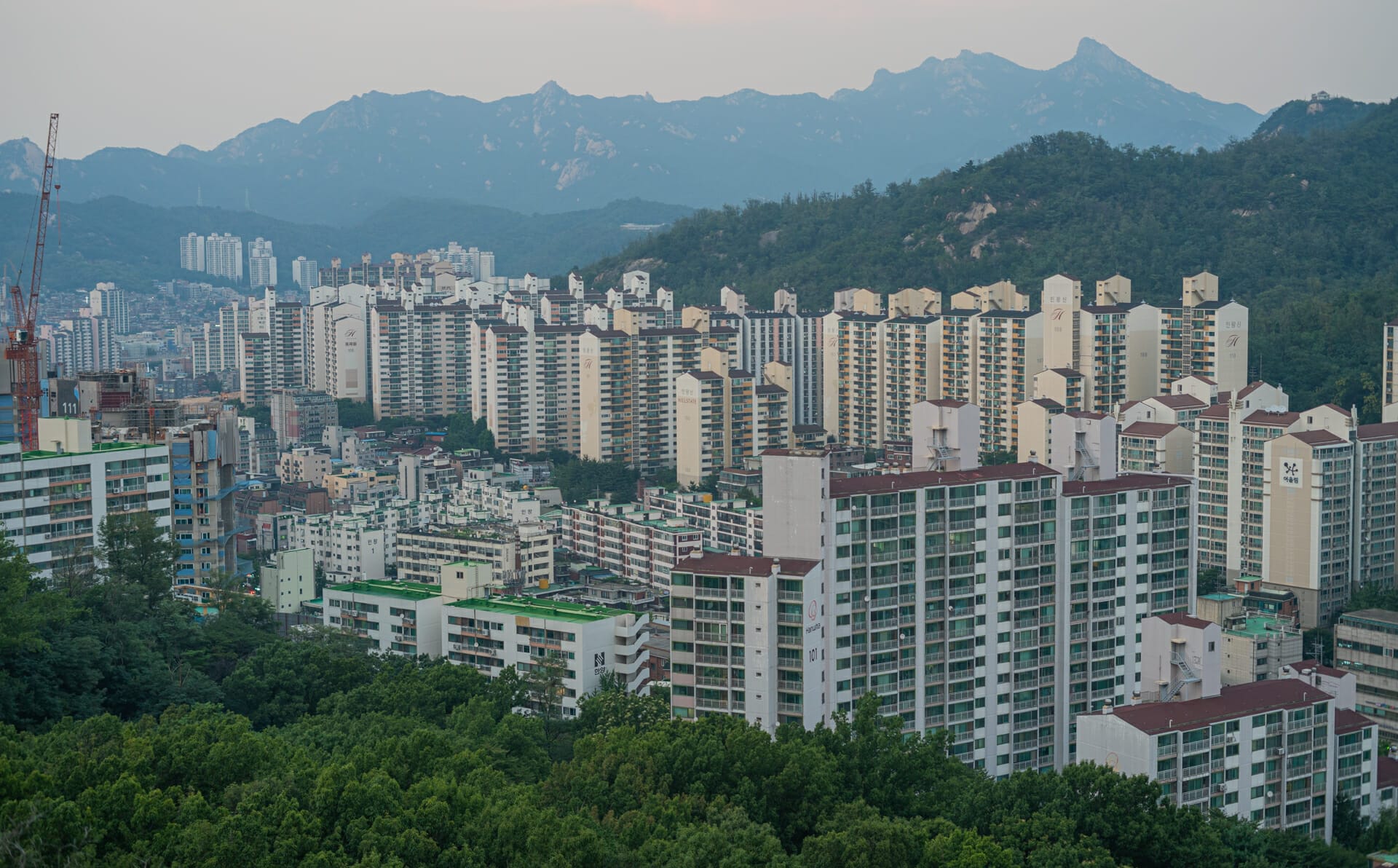
Located opposite Inwangsan is another mountain, Ansan. Also accessible for Muakje Station, Ansan offers some shorter and easier walks than Inwangsan. While it still offers some unique views, they tend to not be as good (or vast) as those offered by the mountain across the road.
While the views at Ansan may not be as great, it does offer one special attraction. That is the Jarak-Gil Trail, one of Seoul’s overlooked walking trails. Circumnavigating the whole of Ansan Mountain, this 7km track provides a great way to enjoy nature.
The path is built like a deck and is relatively flat, meaning that the track is easy to walk along. While the paths to the top of the mountain are a bit steeper, the tracks are still very well made and the walk is easy. It is quite accessible to everyone of all ages.
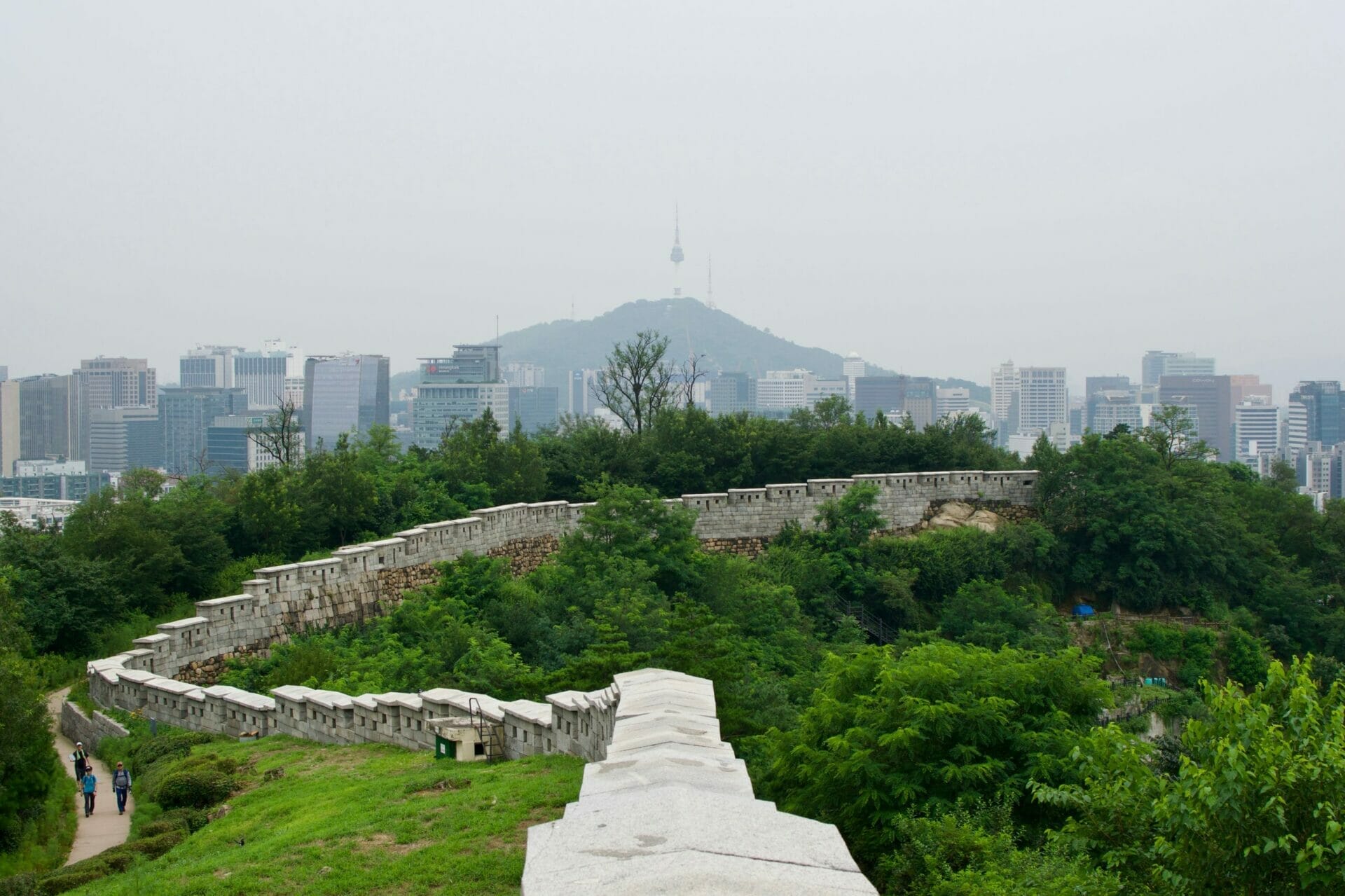
Ansan is one of the better mountains in the city for anyone wanting to walk amongst nature. Although the other mountains in Seoul all offer natural attractions, few of them offer the full tree coverage that the Ansan Jarak-gil Trail has.
If you are in Seoul and looking for either a great exercising path or a place to enjoy nature then Ansan is a great choice. Out of all of the mountains on this list, I find Ansan to be the most ‘green’ in terms of the flora that it offers. There are few mountains in the city that offer green-cover all the way around!
Conclusion – Seoul’s Wonderful Mountains
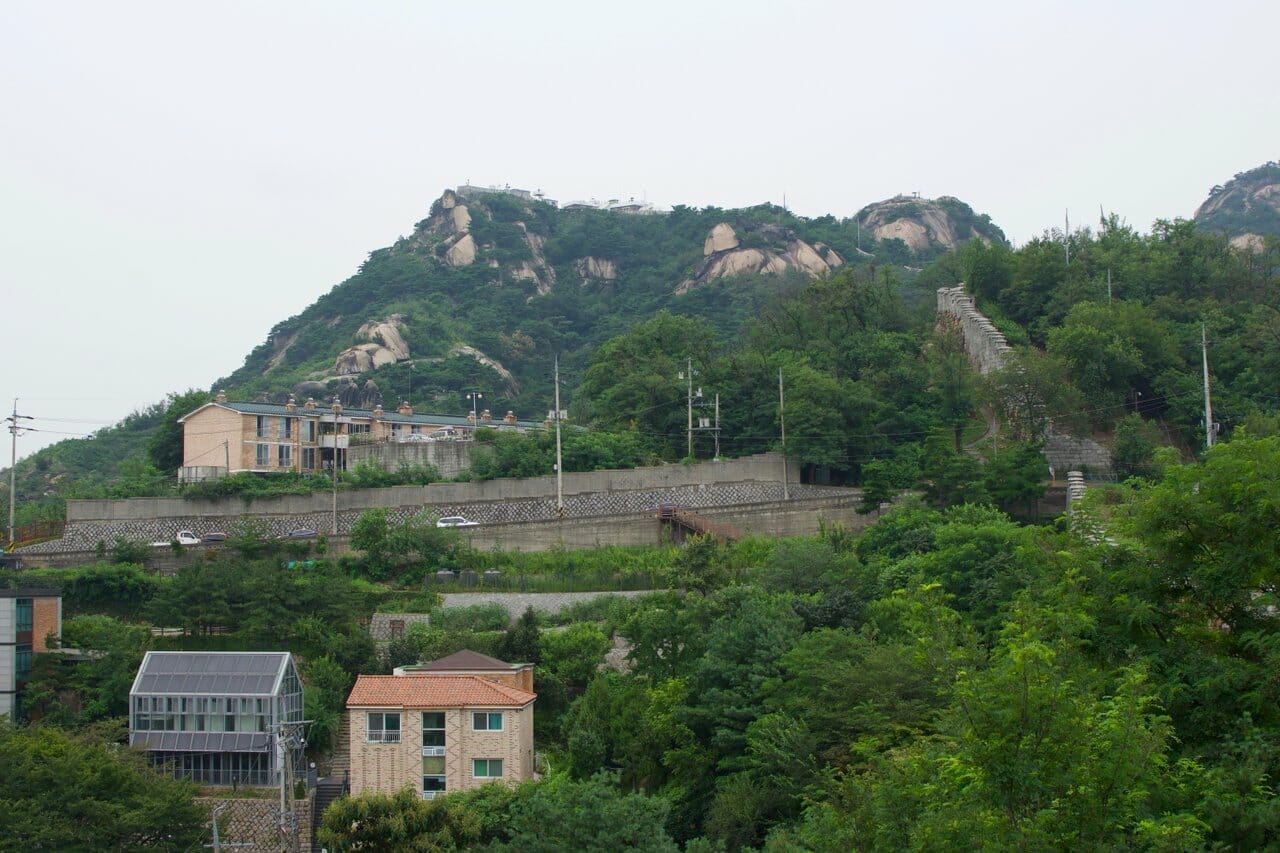
Although Seoul is a city that is know for its modern, human-made side, there is also a lot of the opposite. Not only does the city still have many traditional elements such as the palaces, traditional villages and temples, but it also has a lot of nature.
While there is a lot of nature in the form of parks, the mountains offer a great alternative. On top of this, Seoul really is a city of mountains. They are located all over the city and there is always a new one to explore.
The mountains also create a great balance for the city. While Seoul does have good green-spaces other than the mountains, the mountains create a truly authentic natural-feeling area. While it’s great to live in the city, everyone needs some nature from time to time.
Sadly, the mountains are often overlooked by locals and tourists alike. For locals, they provide a great place to exercise and enjoy nature. For tourists, they offer some of the most unique views of the city, and a unique experience. Mountains in Korea are different from those everywhere else.
As I visit more mountains in the future I will update this list. However, I would love to hear from you too! Have you climbed the mountains of Seoul? If so, which is your favourite and why? Leave a comment below to let us know!
Mountains in Seoul FAQ
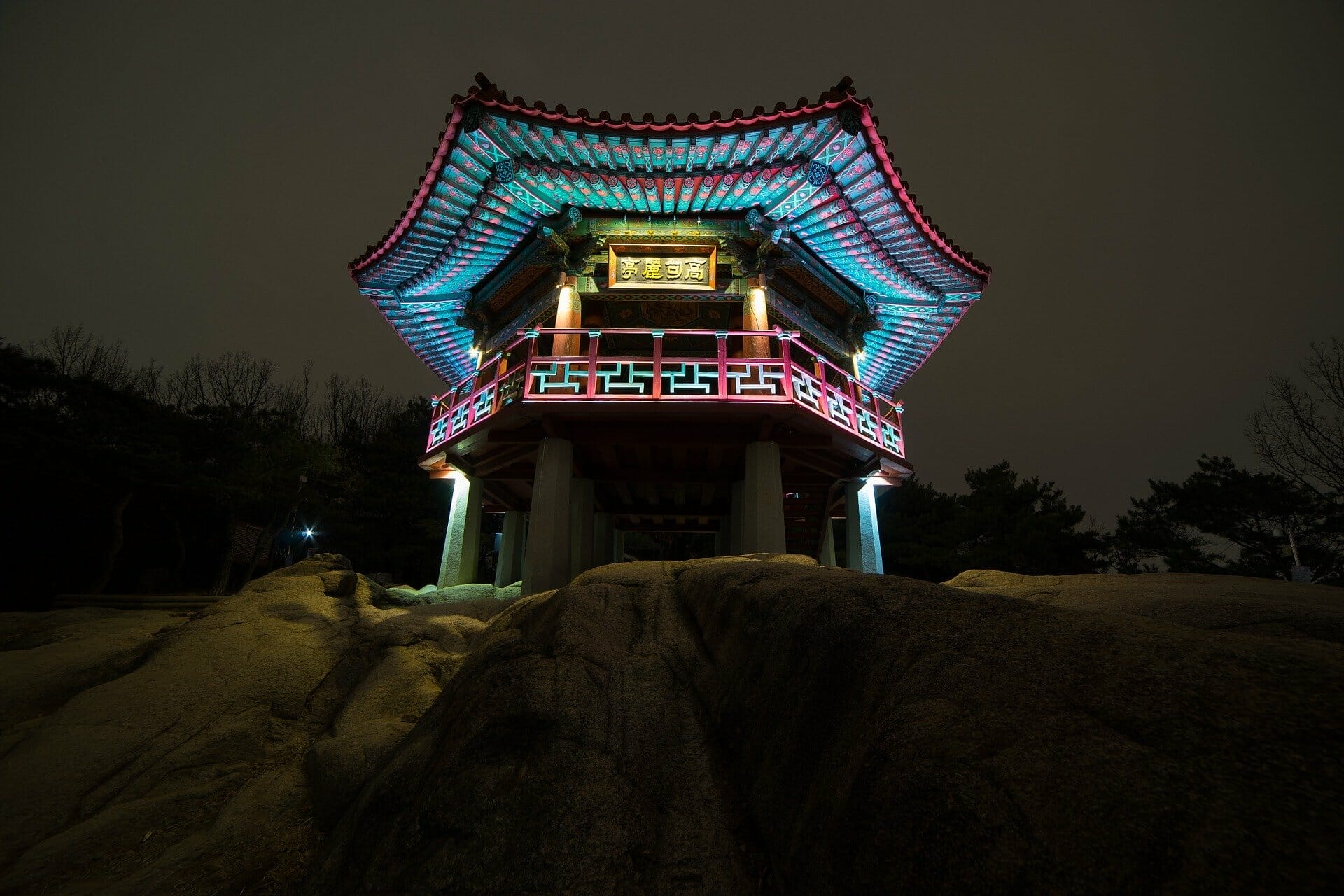
What Are Some Easy Mountain Walks in Seoul?
Nearly every mountain in Seoul offers trails that are accessible to people of all ages and fitness levels. However, some mountains that are specifically easily accessible are Ansan, Namsan and Naksan.
What Is the Biggest Mountain in Seoul?
The biggest mountain in Seoul is Bukhansan which stands at over 800 metres tall. The mountain also has three peaks, each of which is around 800 metres tall.
What Mountains are Best for Nature?
If you want to experience the nature of Seoul I recommend visiting Ansan as it has the nicest tree-cover out of all of the city’s mountains.
What Season Is Best to Explore the Mountains of Seoul?
Every season is a good time to explore the mountains! However, you will want to be careful in both winter and summer. In winter, ice can make some tracks dangerous. In summer, the heat can be exhausting! Fall brings out beautiful foliage on the mountains while spring can bring out blooming flowers.
Do I Need Equipment for Climbing Mountains in Seoul?
Generally, no. However, if you intend to tackle the larger mountains (such as Bukhansan) in winter, you may need to bring proper hiking gear. This is due to the ice that can form on the paths, making them dangerous.
What Mountain in Seoul Has the Best Views?
This varies a lot from person to person. However, my favourite mountain views in Seoul are those offered by Inwangsan and Achasan.
Can I Access Mountains in Seoul With Public Transport?
Yes! Seoul’s public transport is amazing and nearly all mountains can be accessed with only a short walk from the closest bus stop or subway station. Namsan and Naksan even have buses that go to the top!
Are The Mountains in Seoul Child-Friendly?
The vast majority are. The tracks are very well made, and many of them are quite flat. However, some of the walks to mountain peaks (such as Inwangsan and Achasan) may be difficult for younger family members.
